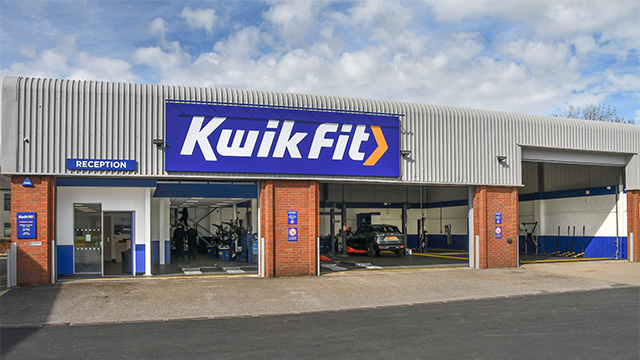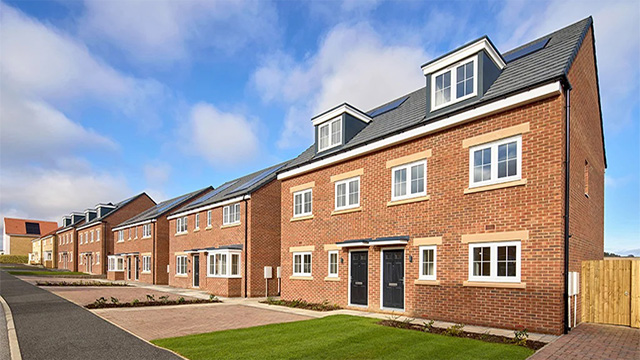John Kirkwood looks at an imaging dream team: Nikon’s digital camera and Epson’s latest desktop printer.
Images play an important part in the work of property professionals. A look at Estates Gazette, for instance, shows how effective photography is in adding value to property information.
Photographs of land and buildings are used for a variety of purposes: advertisements; in sales particulars; as records of property inspections; and as evidence in court cases.
Any new photographic process is bound to be of interest. This review examines the use of digital cameras and inkjet printers as an alternative to conventional film and processing. Two new products were used for this review: Nikon’s Coolpix 300 Personal Imaging Assistant and the Epson Stylus Photo inkjet printer.
The French painter Louis Jacques Mande Daguerre and the British inventor William Henry Fox Talbot are jointly credited with the invention of photographic film over 150 years ago. Digital photography has only become available over the past decade.
The essential feature of this new approach is that no film is used. Instead, images are captured on electronic media in the form of binary numbers. That is, the visual information contained within an image is represented as numeric data.
There is a danger, when comparing the two technologies, of concentrating on how each performs existing functions. In particular, it is too easy to reject digital cameras on the basis that picture quality is inferior to film. However, it is the new opportunities provided by digital photography that make it so interesting, rather than its ability to compete with the image resolution of film.
Visual manipulation
One of the new process’s main features is that digital images may be manipulated in ways that are more difficult with photographic film. Using the review product, I took a photograph of Sheffield’s Crucible theatre, with a street lamp in the centre of the image. This was removed later, using a graphics package, to create a cleaner image.
It is also possible to transmit a digital photograph to someone else, within seconds of taking the picture. Thus, a surveyor could discuss aspects of a proposed development site with a client based hundreds of miles away, while both parties look at an image taken a few minutes earlier.
You can also copy such images directly on to an Internet site, without the need for conversion technology. And digital photographs may be readily incorporated into letters and other documents.
Finally, as the review product shows, information such as sound and personal notes may also be recorded in digital form and attached to photographs.
Camera not obscura
The Coolpix 300 Personal Imaging Assistant is described as “the first multifunction digital camera for professionals on the move”. Sceptics may mock the name, but this device is more than just a camera. In one small package (78mm x 150.5mm x 34.5mm) it combines digital photography with digital sound recording and note-taking.
Up to 132 JPEG, full-colour, 640 by 480 resolution digital images may be recorded on the Coolpix. JPEG is a format that enables images to be compressed to a fraction of their original size, with no discernible visual difference). Using fine mode, 66 images may be stored in the 4Mbyte internal flash memory.
The unit also includes a recording device, which can store up to 17 minutes of audio data. These sound files may be attached to images or held as stand-alone recordings.
Similarly, the built-in touch screen LCD display can record notes on to images or as separate files. This is done by a small stylus which is stored within the body of the camera.
The touch-screen LCD display also controls the camera’s many functions and settings. Initially, these appear complex compared with a normal camera but the clearly written manual makes the Coolpix 300 easy to use.
The LCD first displays the status of the camera. This includes information about battery power, memory and the space available for pictures, sounds (in seconds) and pictures with sounds. After about a 10-second introduction, the camera changes to record mode.
At any time the system’s menu may be displayed by touching the menu icon with the stylus.
The set-up option provides a submenu, letting users alter parameters. These include image quality (fine or normal), sound (on or off), shooting mode (single or continuous) and speed (to change the settings for the camera’s built-in flash).
When taking a photograph, the user may view the LCD or the camera’s conventional viewfinder. Using the latter saves battery power but, as the LCD shows the view directly through the lens, there is no need to adjust the frame when using macro close-up.
Stored images may be viewed on the touch-panel display, either as thumbnails or as single pictures. In this latter mode, notes may be added to the image using the in-built stylus.
Cable vision
The camera is supplied with several cables for linking to PCs, Macs, even your front-room television by linking directly to the TV or via a VCR.
While the camera is in record mode, the image is continuously displayed on screen. With the VCR recording the unit acts like a video camera. Because it has the ability to capture real-time video at 30 frames per second, the Coolpix 300 may also be used for video conferencing. This requires the correct software (eg CU-SeeMe) to be installed on the participating PCs.
Linking to a PC allows images to be transferred, manipulated using a graphics package and stored. Nikon View for Windows, which is supplied with the unit, provides a browser, simple editing functions and file-transfer capabilities. Using the cable supplied was rather slow, but higher speed data transfer is possible with an SS-E300 SCSI cable (SCSI = small computer systems interface).
Overall, this is an exceptionally useful tool for “the property professional on the move”. The data capture and transmission capabilities of this device cancel out the slightly poorer image quality compared with conventional film.
Reproduction techniques
The Epson Stylus Photo is the latest addition to the company’s range of inkjet printers.
Inkjets use print heads that contain a large number of nozzles which fire droplets of quick-drying ink onto the paper. Droplets combine to form images.
Epson has improved this technique by the introduction of Piezo inkjet technology, which it claims is “radically different from that used by other inkjets”. The smallest ink droplet is actually just above the resolution limit of the human eye. Epson uses six colours, instead of three plus black. This produces more natural tones.
Black ink cartridges cost £15 and colour cartridges cost £15.95 before VAT. They produce 540 and 190 pages, respectively. The printer software displays a graphic on screen, depicting the amount of ink left.
Using this, the Stylus Photo is capable of producing high-quality images, particularly using glossy photo paper. The limiting factor is the source. Thus, digitising existing photographs or slides produces sharper images than those captured with a digital camera.
Epson supplies a wide range of paper types for use with the Stylus Photo. In addition to paper at either 360 dpi or 720 dpi, images can be printed on transparency film, photo quality glossy paper, self-adhesive paper and iron-on transfers.
This product is suitable for anyone who wishes to edit and produce their own high-resolution images.
Speed of operation is the main drawback, however, where high-volume work is contemplated. In an estate agency context, say, the Stylus Photo would be ideal for printing individual photographs of buildings, but not for generating multiple sales particulars.
The Stylus Photo forms part of Epson’s Photo Studio. The other elements are the PhotoPC 500 (a 640 x 480 resolution, 24 bit digital camera) and the FilmScan 200. This is a dedicated film scanner that can capture images from 35mm slides and film strips.
Finally, some of the background to this article was provided by the Internet. A search for “Nikon Coolpix 300” using MetaCrawler (www.metacrawler.com) produced 23 sites, including the International Jugglers Association 1997 Festival in Pittsburgh (http://www.mindspring.com/~alhoward/ija97.htm). This contains a large number of images taken with the Nikon camera, accompanied by synthesised background music!
| Company Information | |
|---|---|
| Name: | Nikon UK Ltd |
| Address: | Nikon House 380 Richmond Road Kingston Upon Thames Surrey KT2 5PR |
| Telephone: | 0181 541 4440 |
| Fax: | 0181 541 4584 |
| Literature hotline: | 0800 230220 |
| Email: | chrishnikon@compuserve.com |
| WWW URL: | www.nikonusa.com |
| Specifications: Nikon Coolpix-300 |
|---|
| Resolution: 640×480 – selectable compression (fine or normal) |
| Lens: 6.2mm (45mm equivalent) f/4 |
| Focusing: Fixed – 14cm (macro) to infinity |
| Storage: 4Mb INternal flash memory holding 66 fine or 132 standard resolution images |
| Flash: Built-in, GN9 with red-eye reduction feature |
| Sensitivity: SO 100 |
| Shutter: 1/45 – 1/2,500 |
| Modes: Programmed AE |
| Viewfinder: Real image optical or via 2.5″ LCD |
| Power: 4 x AA Alkaline batteries |
| Software: Windows or Mac |
| Interface: Serial, SCSI, Video (PAL) & Audio |
Other features:
|
| Dimension: 78mm(w) x 34.5mm(d) x 150.5mm(h) |
| Weight: 240g (excluding batteries) |
| Price: rrp £638 ex VAT |
| Product Description: Nikon Coolpix-300 |
|---|
|
Offers powerful imaging and communication capabilities in a pocket-sized unit. Coolpix 300 is the first multifunction digital camera designed to incorporate photographic, handwritten and audio information, as well as advanced presentation capabilities, in a small, easy-to-use digital imaging assistant. |
| Display Features: Nikon Coolpix-300 |
|---|
|
LCD display and stylus lets users: |
| Specifications: Epson Stylus Photo |
|---|
| Description: A4 serial inkjet printer |
| Technology: Epson Micro Piezo |
| Noise Level: less than 45 dBA |
| Power: less than 15 watts |
| Resolution: Max 720 x 720 dpi |
| Speed: From 2 min for 4″ x 6″ photo paper |
| Driver: Windows 3.1, Windows 95 or Macintosh |
| PC Configuration: Minimum 80386/25 MHz processor, 16 Mbytes RAM, 20 Mbytes hard disk space, VGA monitor; recommended: Pentium or higher processor, 32 Mbytes RAM, 50 Mytes hard disk space, VGA monitor |
| Macintosh: Minimum: system 7.1, 5 Mbytes of RAM, 20 Mbytes hard disk space; recommended: System 7.1, 8 Mbytes RAM, more than 40 Mybtes disk space. |
| Input buffer: 64 Kbues |
| Dimensions: 168mm(h) x 429mm (w) x 275mm(d). |
| Price: rrp £409 ex VAT |
| Epson Stylus Photo: Features |
|---|
| Photo reproduction quality output Optimised for photo reproduction Windows and Mac compatible Prints 4″ x 6″ format and enlargements to full A4 LivePix photo-editing software included |
| Company Information |
|---|
| Name: Epson (UK) Ltd |
| Address: Campus 100 Maylands Avenue Hemel Hempstead Herts HP2 7TJ |
| Telephone: 01442 61144 |
| Fax: 01442 227227 |
| E-mail: info@epson.co.uk |
| WWW URL: www.epson.co.uk |










